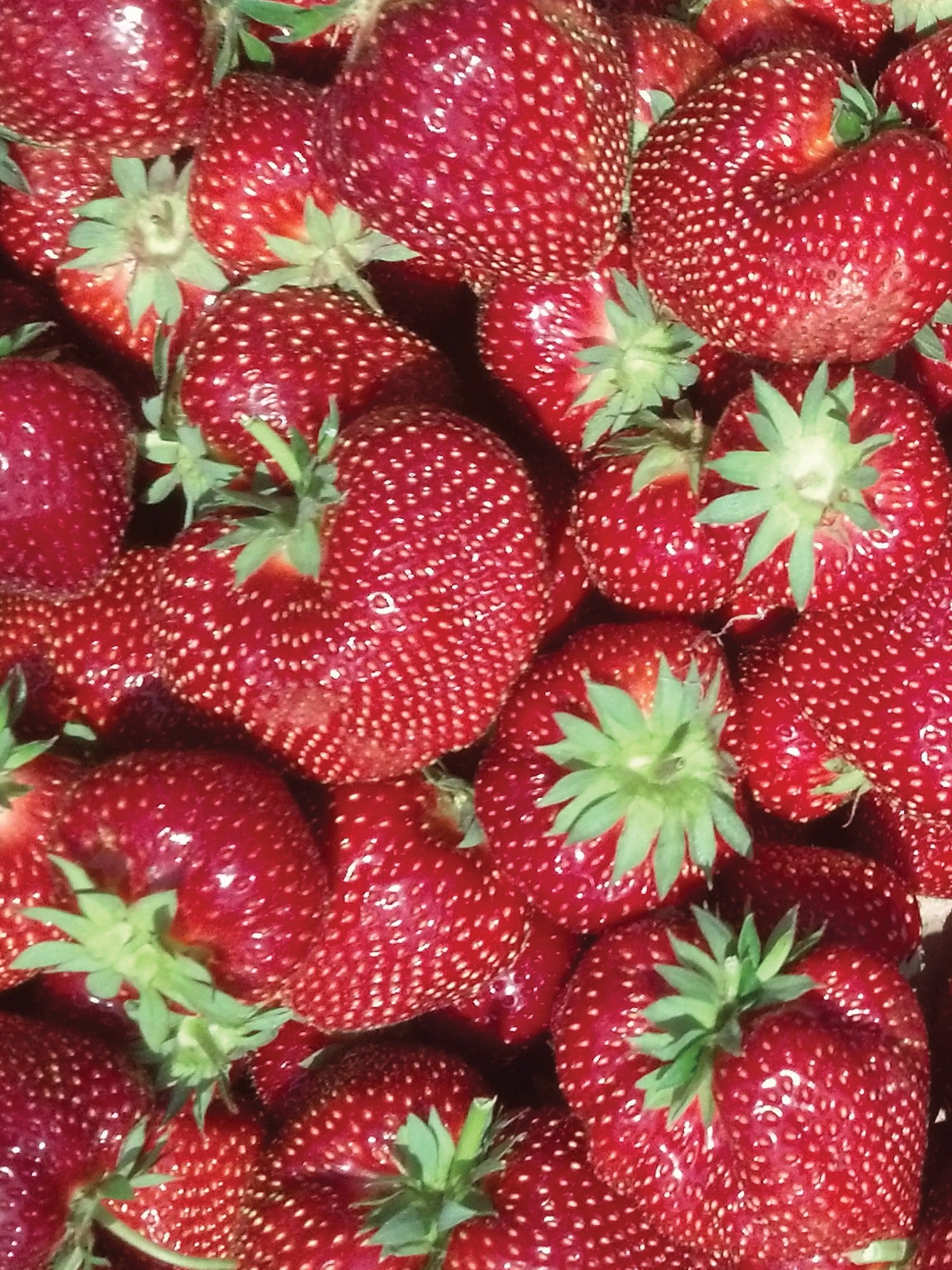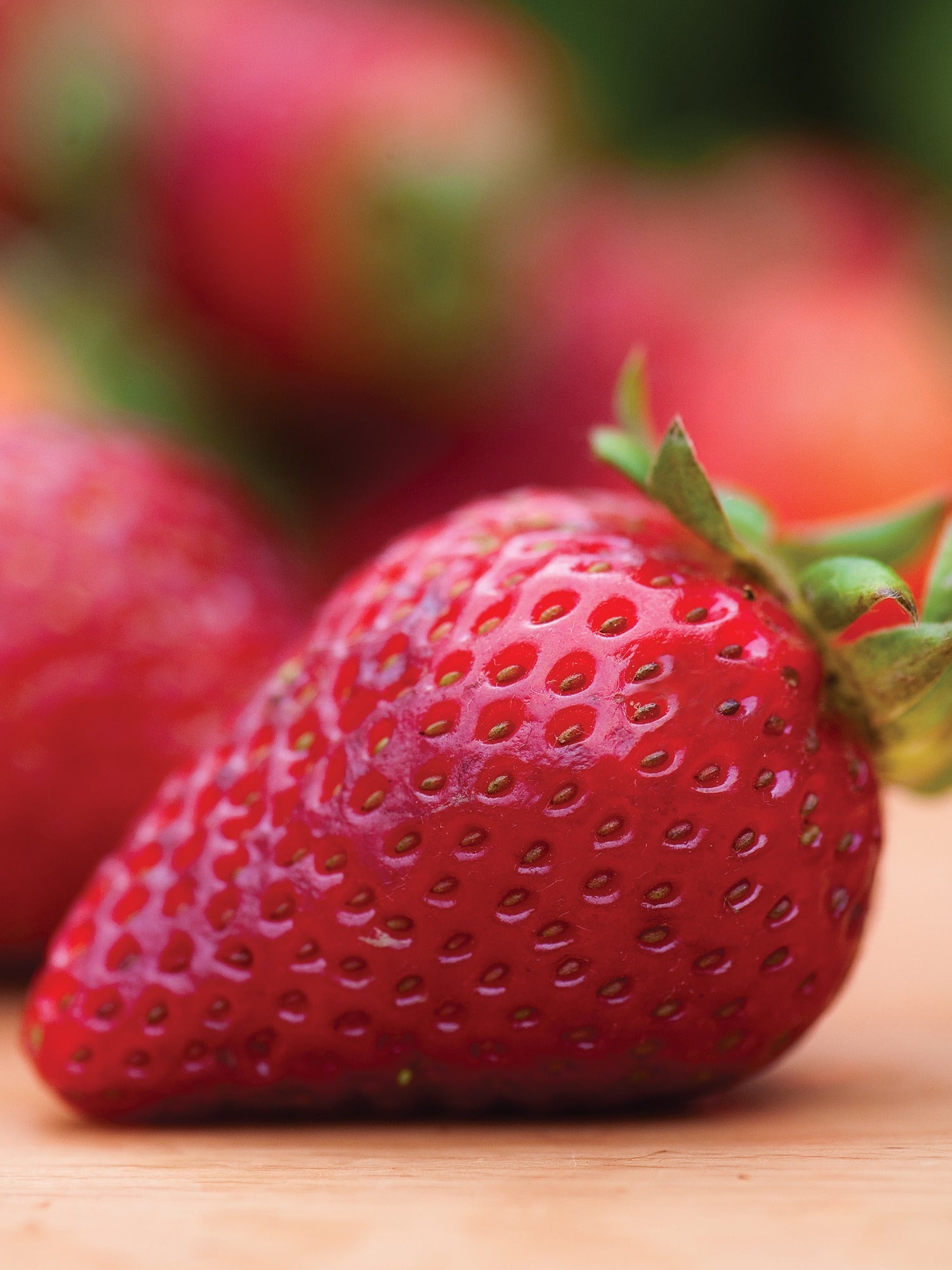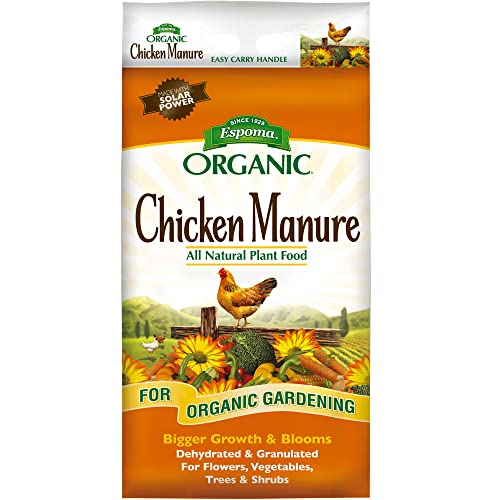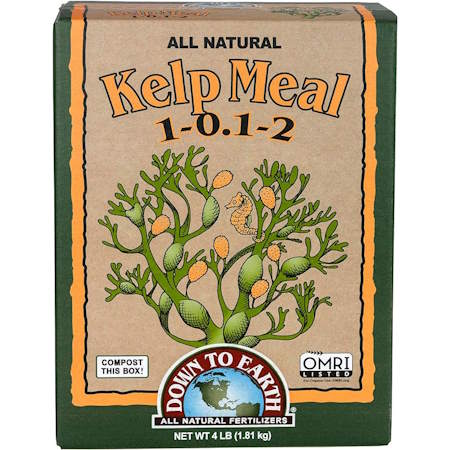How to grow bigger strawberries – 5 important elements to get right for large and juicy fruits
Discover why June-bearing varieties may be your best bet for growing bigger strawberries
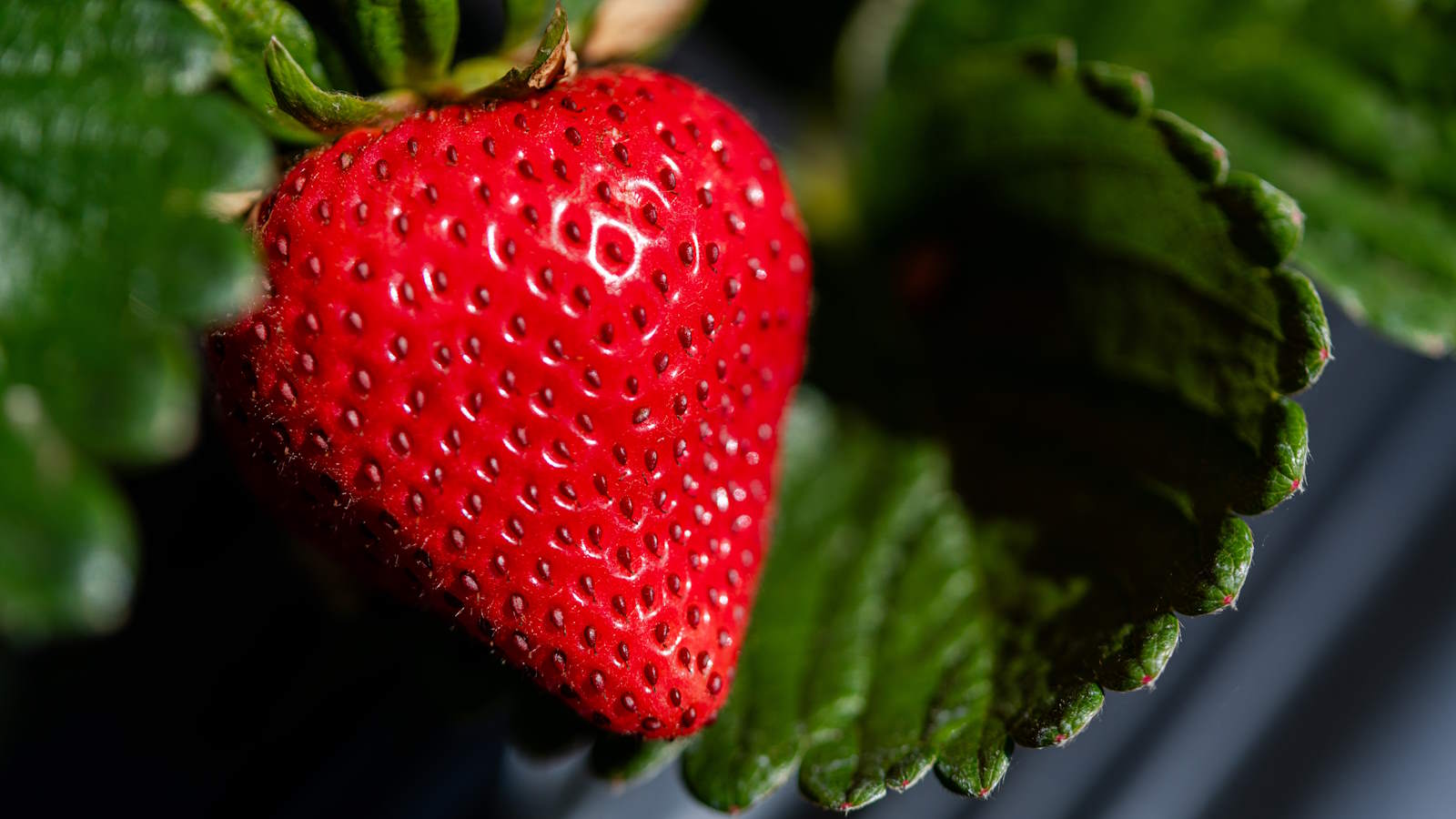

Freshly picked strawberries are a delicious summer treat. Whether picked simply to enjoy fresh from the plant or to use for baking or preserves, a large and juicy homegrown strawberry is a real pleasure to behold.
I have grown strawberries for many years at home and as a professional kitchen gardener. In particular, I grew a variety of strawberries for chefs - in terms of sizes, shapes, and flavor - and the case for growing bigger strawberries especially came to the fore when the fruits were going to be sliced and beautifully presented on dessert plates.
Firstly, the good news is that growing strawberries is very simple. However, if you want to delve deeper and know how to grow big strawberries then there are some important factors to consider- but thankfully they are not too tricky. Get it right and you can enjoy a great harvest of large, juicy, and delicious strawberries fresh from the garden.
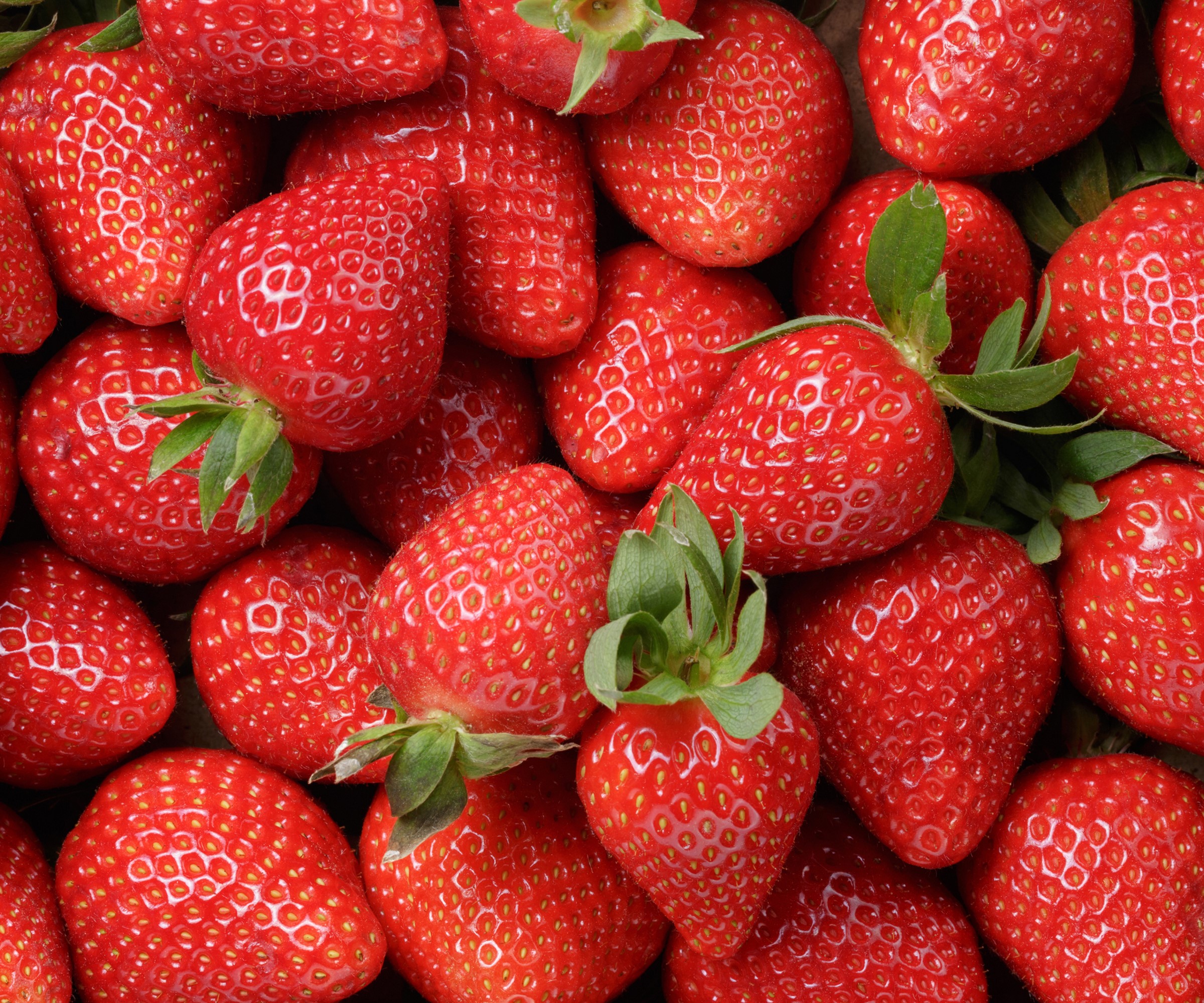
Big and juicy strawberries are the dream of most growers
5 tips for growing bigger strawberries
Do you want more from your crop and find yourself picking strawberries wondering, how do I make my strawberries grow bigger? It could be that your fruits are smaller in size due to the variety, location, or maintenance. If you want to know how to grow big juicy strawberries, we reveal some expert tips to help you.
1. Variety
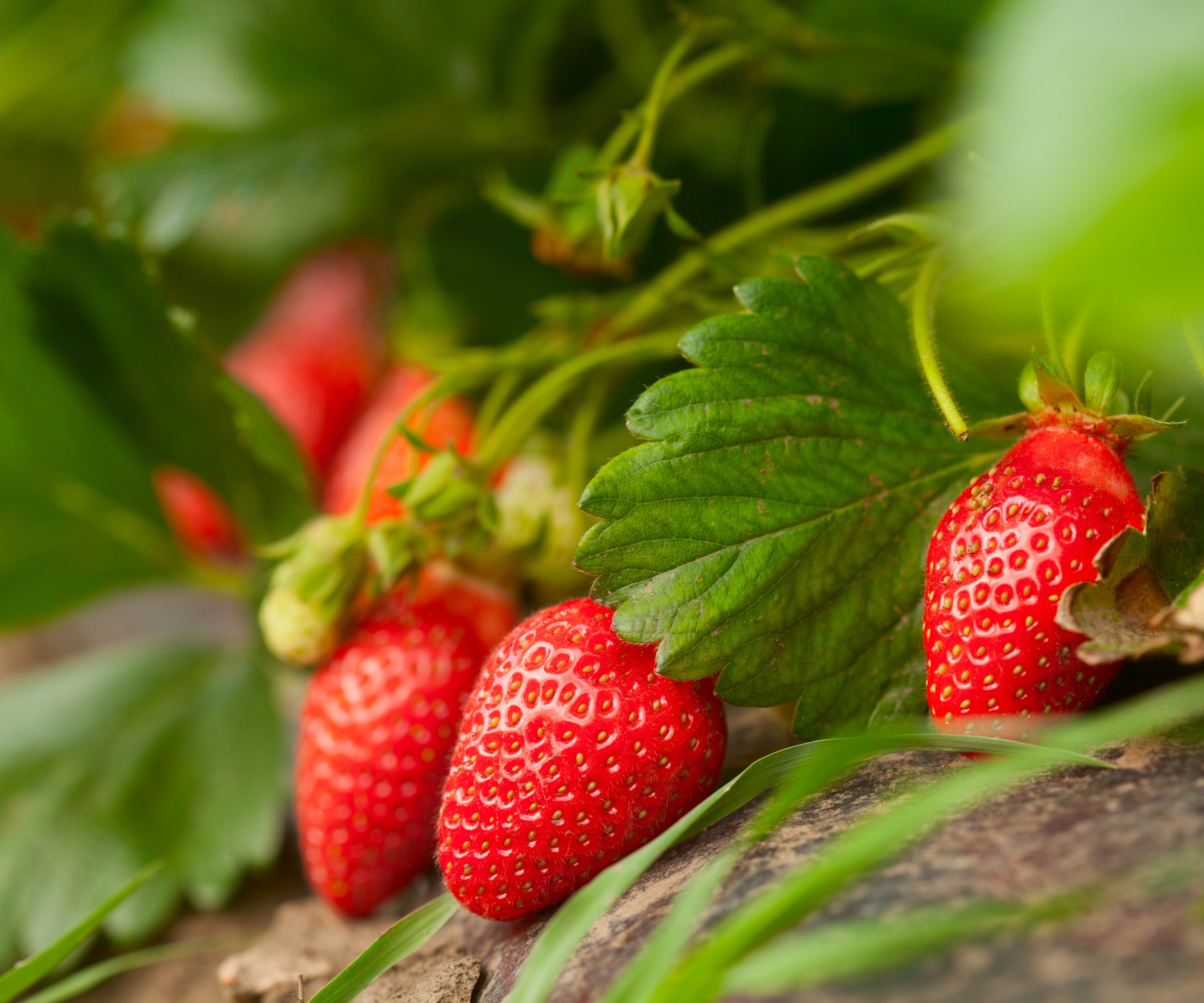
Some types produce bigger strawberries than others
There are many types of strawberries to grow in a kitchen garden. There are everbearing strawberries that produce multiple crops each year, day-neutral types that continually bear fruit through the season, and June-bearing strawberries that produce one large crop from mid-June to early July. If you aspire to grow bigger strawberries, then choosing the right variety is key.
Kate Brines from Stark Bro’s Nurseries & Orchards recommends that June-bearing strawberries ‘are typically your best bet’ if you want large fruit. Such varieties produce a large yield but in a shorter period than other types of strawberries.
‘June-bearing varieties are known for producing notably large berries and are popular among both commercial growers and home gardeners,’ says Katie. ‘These differ from everbearing strawberries, which produce two to three harvests throughout the growing season, usually yielding smaller fruit each time.’
Design expertise in your inbox – from inspiring decorating ideas and beautiful celebrity homes to practical gardening advice and shopping round-ups.

Katie Brines is a gardener and grower, as well as being part of the small marketing team at Stark Bro's. The nursery has provided quality fruit trees, nut trees, berry plants, and garden plants across America for over 200 years.
Shop June-bearing strawberries
2. Location
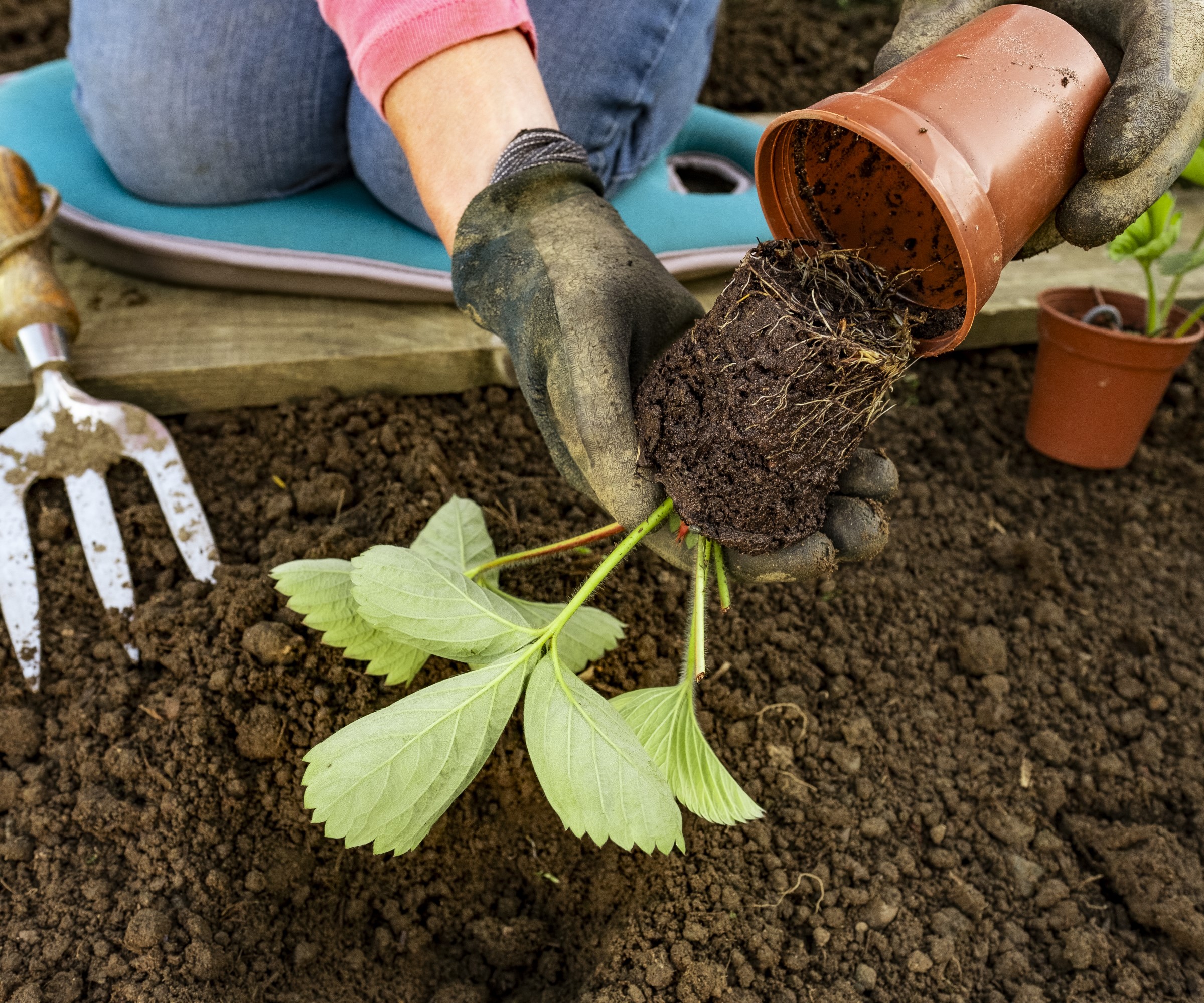
Strawberries want to be planted in spring or fall
Along with choosing a variety that produces large fruits, Katie Brines adds that ‘location is crucial for maximizing fruit size’. Strawberry plants need sun to produce fruits, so plant them in a sunny spot in the backyard that gets at least six to eight hours of sun daily.
Avoid locations that are shaded by trees or buildings for large periods of the day, as this will impact the plant’s fruiting. If you are growing strawberries in pots, place the container in the sunniest corner of the garden to soak up that sun and produce bumper fruits.
Strawberries want a fertile soil type that is well-draining, as plants do not respond well to sitting in soggy soil. When planting strawberries make sure the crown is planted slightly above the ground level and the roots are spread out in the soil to provide access to valuable nutrients.
A healthy and well-fed plant will reward you with bigger yields of fruit. Planting the crown too deep is one common strawberry problem that can lead to crown rot.
3. Fertilizer
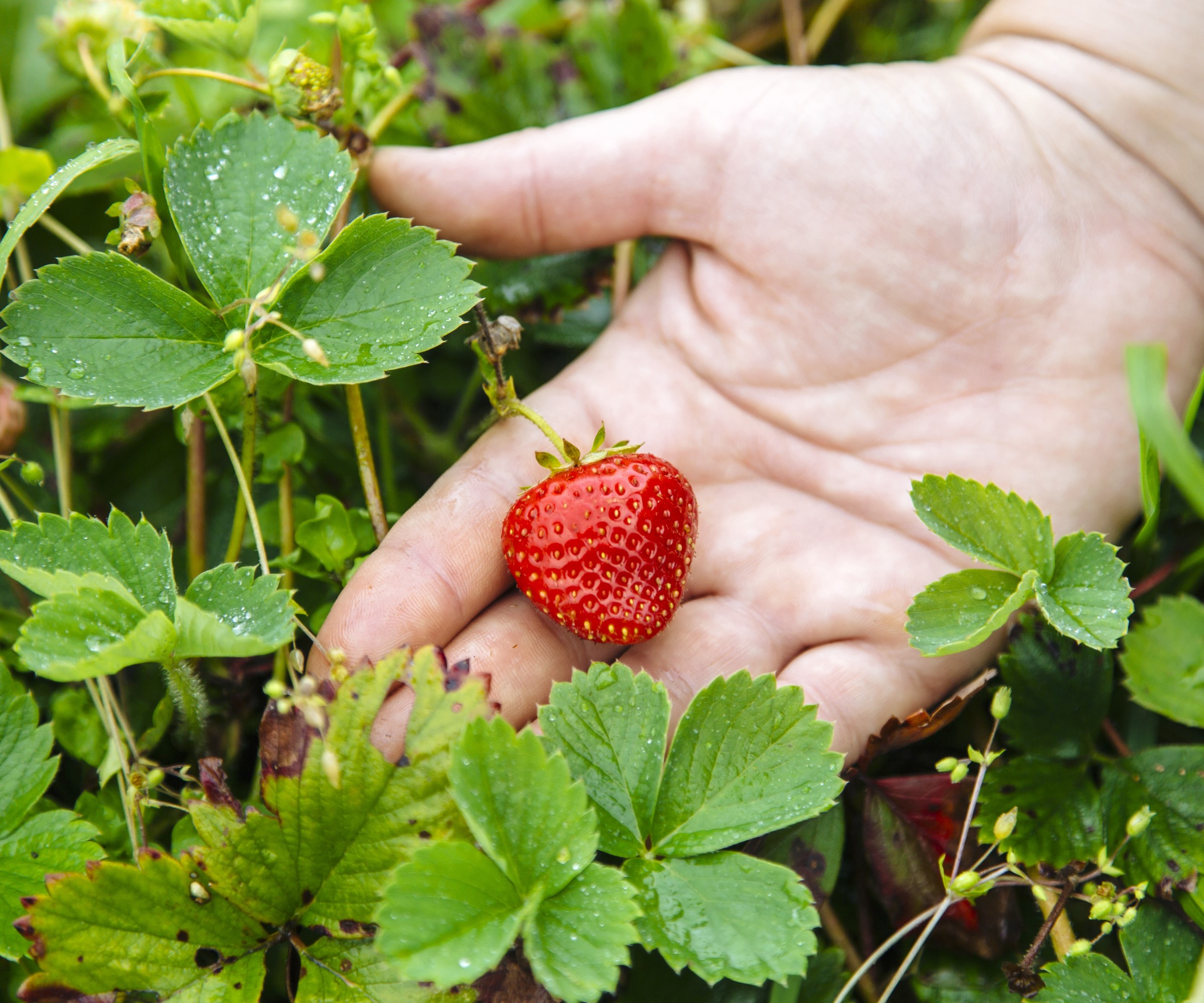
Feeding is important to growing bigger strawberries
Feeding strawberries annually will help boost your harvests. Fertilize plants in early spring and during the growing season to provide much-needed nutrients required for strong growth and the development of large fruits.
A balanced fertilizer should be applied in spring. This can be done by applying a slow-release granular product or adding organic matter and working it into the site. For example, Lindsey Chastain, homesteader and founder of The Waddle and Cluck, says: ‘I highly recommend using compost as a fertilizer because it is nutrient-dense.’
There are organic product options to fertilize strawberries, including the likes of bone meal, chicken manure pellets, or kelp meal. Organic fertilizers are generally better to use on food than chemical products.
Once the strawberry plants start flowering, adding a fertilizer that is high in potassium can encourage the development of fruits. Such a product can be a liquid fertilizer that is mixed in when you water plants every few weeks during the season.

Lindsey Chastain is the founder of The Waddle and Cluck, a website about all things homesteading from livestock to gardening to recipes.
Shop strawberry fertilizers
4. Runners
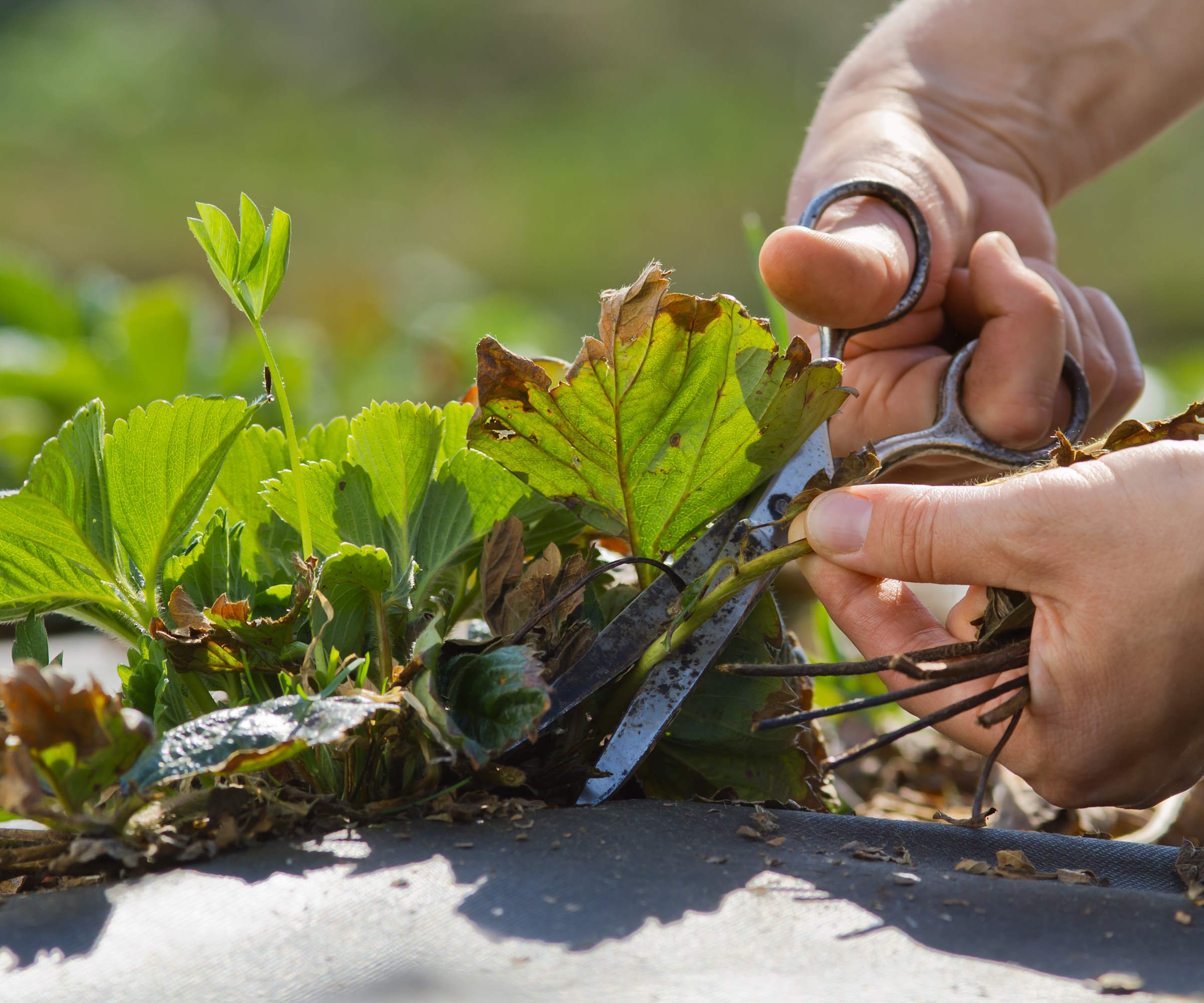
Runners can be used to propagate new strawberry plants
Established strawberry plants will produce a plethora of runners each year. While growers will commonly use these runners to cultivate new plants, if you want to grow bigger strawberries it is best to remove these.
Snipping off the runners will help to direct energy back into fruit production. Runners are helpful as they make new plants, but they do so at the expense of the growth of the existing plant.
Regularly removing the runners as they start developing keeps all that energy contained in the plant to develop the fruits and grow bigger strawberries.
5. Replant
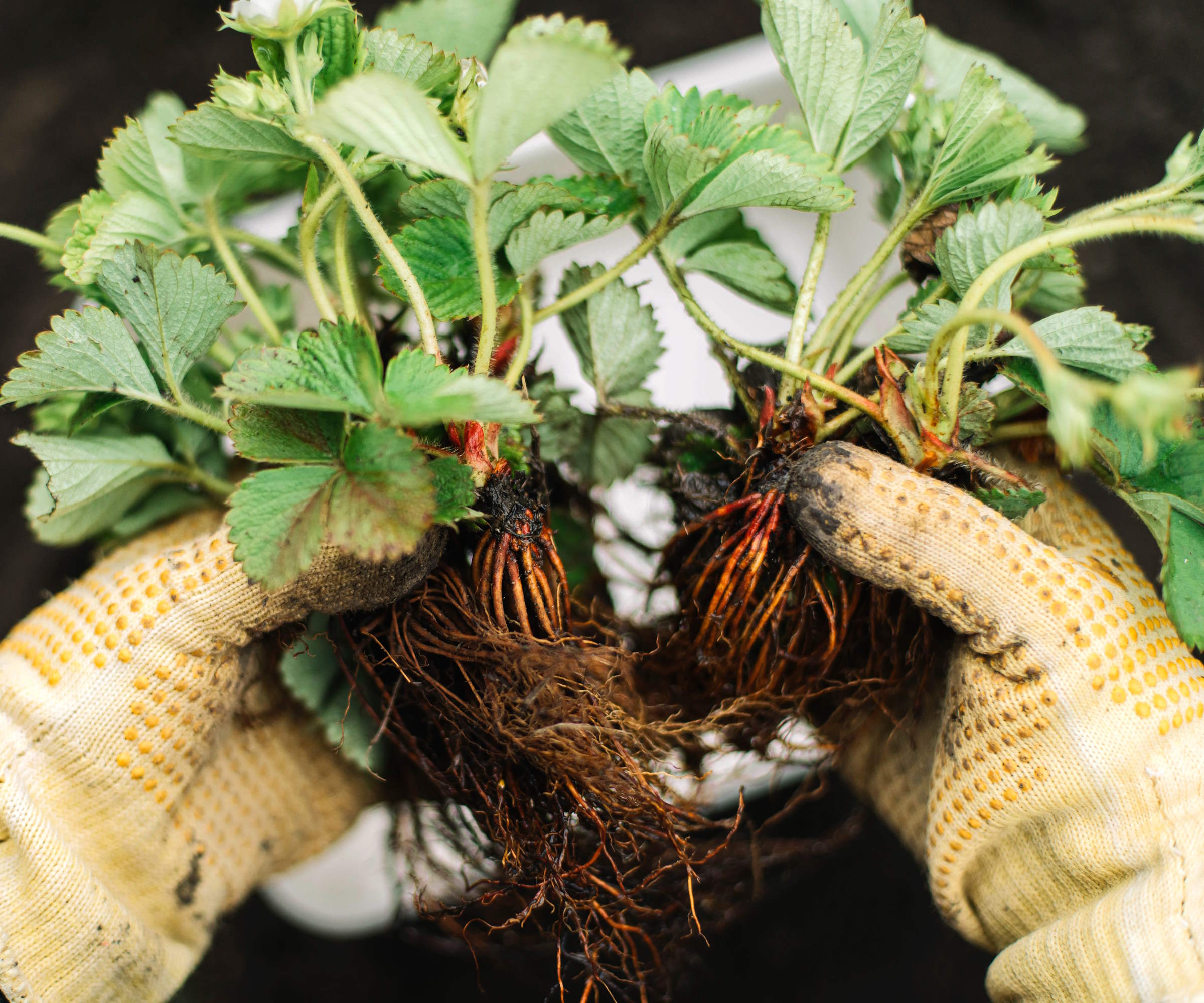
Strawberry plants can be bought bare root or container-grown
Strawberry plants have a period of high productivity. This tends to be for three or four years and the fruiting drops after this - for this reason many growers replace their plants every three years. Katie Brines recommends: ‘It's beneficial to rejuvenate your patch by replacing old plants with new runners to maintain vigor and fruit size.’
To keep your vegetable garden full of vigorous strawberry plants that produce large yields of big fruits, renovating the strawberry bed regularly is important. You can either lift and divide strawberries, take plant cuttings and grow new plants from runners, or try growing from seed.
Having a mix of plants of different ages means you can keep the bed productive year after year to supply you with a great crop of large strawberries.
FAQs
Why do strawberries get smaller?
There can be several factors that can cause strawberries to stay small. Old plants can lack the vigor to produce large strawberries and any strawberry plant will struggle to grow big fruits if there is a lack of nutrients in the soil. These issues can be addressed by rejuvenating strawberry beds and doing a soil test to identify nutrients, along with establishing a proper fertilizing and watering schedule. Heat stress and a lack of pollination can also result in small strawberries.
Follow the above expert-recommended tips and you should get an impressive harvest of fruits to enjoy. Just remember to keep an eye out for any strawberry pests that may nibble on your sizeable strawberries - as many pests will be tempted by your tasty fruits and you do not want them to reap the rewards of your hard work.

Drew’s passion for gardening started with growing vegetables and salad in raised beds in a small urban terrace garden. He has worked as a professional gardener in historic gardens and specialises in growing vegetables, fruit, herbs, and cut flowers as a kitchen gardener. That passion for growing extends to being an allotmenteer, garden blogger, and producing how-to gardening guides for websites. Drew was shortlisted for the New Talent of the Year award at the 2023 Garden Media Guild Awards.

